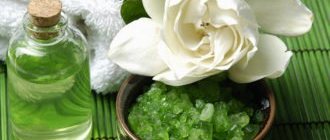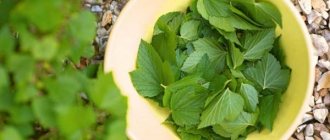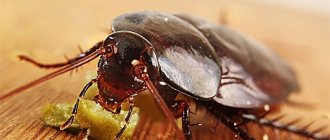Hydrangeas have always been a favorite ornamental plant for any style of garden design. They are planted everywhere by gardeners - from hedges to neat potted plants. If you're new to gardening, Hydrangea paniculata is a great flowering perennial plant for new gardeners to grow. They bloom for a very long time, are easy to care for and adapt to a wide range of climate conditions. In this article, we will provide a detailed guide to growing this ornamental shrub.
Trimming
Beginners usually believe that indoor hydrangeas do not need pruning of branches. This is a wrong opinion. Pruning is a mandatory procedure. With its help, the bush takes shape, and the plant correctly distributes the nutrients it receives from the soil.
Pruning is carried out 2 times a year:
- In autumn, when the plant fades. It is necessary to remove weak shoots at the root. Strong ones need to be shortened by half.
- In the spring. Strongly elongated weak shoots are removed.
It is allowed to trim the top of the plant. Thus, the growth of lateral shoots is provoked, and in the future the bush acquires greater splendor and decorativeness.
How to grow a flower: propagation methods
There are three ways to grow hydrangea yourself. Let's look at each in more detail.
Cuttings
Reproduction by cuttings is considered the most reliable:
- At the end of the winter period (late January - early February), cuttings 6-7 cm long are cut from strong basal shoots. There should be 2-3 internodes on each segment.
- On the lower part of the cutting, the leaves are completely removed; on the top and middle, the foliage is cut in half.
- Each shoot is treated with a root stimulator and planted in a substrate with a sand-peat composition.
- Next, the cuttings are watered abundantly and covered with jars.
This method is necessary to maintain an optimal level of humidity and prevent the soil from drying out.
Attention! Seedlings need good lighting; you can place them on a windowsill or purchase fluorescent lamps. The optimal temperature level is from +18 to +20 degrees. The cuttings will take root in a month, after which they can be transplanted into small pots or containers
The cuttings will take root in a month, after which they can be transplanted into small pots or containers.
Cuttings rooted at the end of winter will become a full-fledged bush with several shoots by autumn. You can also cut the plant in the spring, in which case the hydrangea will have one stem.
Hydrangea flowering can only be observed by plant owners who comply with all conditions of care and maintenance, taking into account all the nuances.
Dividing the bush
This method is the best breeding option for beginners, or for those who do not want to bother and spend a lot of time on this process. Despite the simplicity of propagating a bush by division, several rules still have to be followed:
- You can divide the bush only during the replanting period (once a year);
- each shoot must have a growing point and several roots;
- before planting, the shoots are cut by a third, planted in a fertile bud and watered;
- Having planted the sprouts in the spring, good rooting can be expected already in September-October.
Seeds
Propagation by seeds can be carried out only after the end of the winter period.
If you prefer the seed method, remember the need to regularly spray the soil with seeds from a spray bottle and remove the film for ventilation. The soil must be kept moist throughout the growing period. As soon as the first shoots appear, the cellophane or film is immediately removed.
Reference. Transplantation into a deeper container is carried out after the first 2-3 leaves appear on the sprout. The composition of the soil should be identical to that in which the seeds were originally grown.
As soon as the sprout gets stronger, it can be moved to a small separate pot (its diameter should not be more than 7-8 cm).
Why doesn’t it bloom and what to do?
Sometimes gardeners are faced with the fact that flowers never appear. It happens that the buds cannot open and begin to wither and fall off. The reasons for this may be:
- improper care;
- preparations for stimulating flowering;
- soil acidity;
- depletion of plant strength.
Plant treatment
Due to the treatments used by unscrupulous flower shop sellers, flowers may not appear for several years. In this case, you have to help the culture by introducing a growth activator. It helps strengthen and develop the root system, helps the development of stems and branches, is effective in terms of green growth, and allows you to accelerate the growth of flowering perennials.
Incorrect pruning
Gardeners do not always perform pruning correctly. The perennial is pruned at the end of October. In this case, it is necessary to leave several pairs of formed buds on the shoots. Usually bushes are formed at 2-3 years. Pruning can be light, in which the bush is removed from dry inflorescences and overgrown shoots.
When spring comes, the stems are shortened, this promotes more luxuriant flowering. Do this before sap flow begins. Each type of hydrangea has its own pruning nuances. For example, large-leaved bushes need sanitary pruning. In this case, frozen, broken shoots and stems are cut off, the growth of which is thickened by the bush.
Tree-like ones get rid of weakened and crooked shoots, as well as stems that are more than 3 years old. Fresh growths are pruned, inspecting the stems themselves. The weaker they are, the more pruning. Paniculate-type varieties require gentle pruning. In this case, shoots that grow inside the crown are pruned, young growths are pruned to 1-3 pairs of buds.
Kidney damage
It happens that the reason for the lack of flowers lies in damage to the buds, which happens in bad weather. This phenomenon is common and characteristic of large-leaved hydrangeas. Typically, such perennials have flower buds on the tops of stems formed a year ago. The perennial blooms on last year's growth; when covering it for the winter, it is necessary to preserve the entire stems.
The kidneys should not be allowed to freeze in winter. If this has already happened, they have to be removed. You should not expect flowers this season, however, in a few years the perennial will delight the gardener with lush inflorescences and long-lasting flowering. The cover of the perennial is removed only when the temperature at night is at least -5°C.
Variety acclimatization
Hydrangea came to our country from Central Asia. Its climatic conditions differ significantly from the climate of different regions of the Russian Federation. Other varieties simply do not have time to acquire new flower buds. For this reason, they do not bloom after wintering. In some cases, flowering is quite sparse, the buds are sluggish, and they do not have enough strength to open.
Poor nutrition
A weak perennial may not bloom for several years. To help an ornamental plant gain strength, you must remember to provide it with proper and balanced nutrition. At the same time, it should not be overfed with organic matter, because this also reduces the likelihood of the appearance of lush inflorescences. Rather than oversaturate a garden or indoor beauty, it is better to dose the fertilizer. Nitrogen is added in small quantities in the spring. Potassium and phosphorus are added only after it.
Excessive illumination
Most varieties of hydrangea are not able to provide gardeners with lush flowering if they are planted incorrectly. Only a few varieties of hydrangea love light, although they also need it no more than 6-8 hours a day.
To ensure that perennials bloom in open spaces, gardeners resort to various tricks. For example, they plant a plant 10 cm below the soil level, covering the tree trunk circle with mulch (sawdust or peat). There should not be much shadow around the bush. Hydrangea needs diffused sunlight, but can tolerate partial shade.
Lack or excess moisture
The place for planting the perennial is selected correctly; it is important to provide the hydrangea with good drainage. A place is selected for a garden plant so that melt (rain) water cannot stagnate in it.
Hydrangea should not be planted next to garden trees. In this case, the plant will experience a moisture deficiency.
It must be watered regularly, but correctly. You cannot moisten the perennial during the day in the heat; watering must be done in the evening or in the morning, but not more than 3 times a week. If it is not hot outside, it is enough to water the bush once a week. Depending on the size of the bush, you may need from 1 to 1.5 buckets of water for watering. If the soil is sandy, water more often, if clay - less often.
Conditions for lush flowering
The gardener's attentive approach to cultivation will help the bush bloom lushly. Errors in care: excess or lack of moisture and nutrition, weeds - lead to diseases and, accordingly, to loss of decorative qualities.
To speed up the appearance of buds and make the inflorescences full and dense, spray with an aqueous solution of gibberellins. The concentration of the drug is 50 ml/1 l, repeated treatment after a week.
The first flowering takes a lot of energy from the crop, so in the second year it may be sluggish. It is recommended to pick off all the first inflorescences so that they bloom in full force next season. It is important to rejuvenate the bush in a timely manner. Experienced flower growers carry out radical pruning of the stump every 5–7 years, depending on the variety and type.
Hydrangea - planting and care in open ground
So, it's time to plant hydrangea in open ground. To do this, carefully remove the seedling from the pot along with the earthen lump and place it in the hole. If the seedling is without a pot: straighten the roots and also place it in the center of the hole. Sprinkle with the nutrient mixture so that the root collar is at ground level, compact the soil. After this, water the bush generously (8-12 liters of water) and mulch the soil with pine needles or peat with a layer of 4-7 cm. This way the soil will remain moist longer and weeds will not appear on it.
Popular articles Timing for transplanting daffodils
In order for hydrangea to take root faster, it needs care at first. Water the bush with soft rain or settled tap water. You can slightly acidify it with citric acid (20-25 g per 10 liters of water) or vinegar (1 tablespoon per bucket of water). After each watering, loosen the soil, and to strengthen the shoots and protect against fungal infections, periodically water it with a weak solution of potassium permanganate.
When the hydrangea takes root and new shoots appear, prepare the bush for winter
This is especially important for plants from the nursery or non-hardened seedlings. Before covering the hydrangea, remove the remaining leaves and inflorescences from the shoots so that they do not rot.
If the seedling is 3-4 years old, do a little pruning. You will learn how to prune hydrangea from our material.
Pruning hydrangea in the fall: detailed instructions for beginners How to properly prune hydrangea in the fall and is it necessary to do it? Let's figure it out together!
To prevent young plants from freezing in winter, after the first small frosts (in the middle zone they usually occur in November), the center of each bush should be filled with pieces of dry sphagnum to a height of 20-30 cm. If there is no sphagnum, cover the bases of the bushes with a layer of sawdust, earth, and leaf humus , chopped tree bark, chopped straw, etc. It would also be a good idea to add mulching material to the tree trunk circles (the larger the mulch particles, the thicker its layer should be). Then tie the plants with twine and wrap them in spunbond, burlap or spruce branches.
In the spring, the layer of winter mulch must be removed so that the hydrangea does not die from damping off, and the tree trunk circle should be sprinkled with a layer of 8-10 cm of fresh mulch. In the first few years, the bush grows green mass, so it is better to remove the inflorescences.
Caring for hydrangea in open ground is not difficult, so take a closer look at this plant and try planting it on your site. In the articles below you will find many secrets and tips that will help you grow healthy flowering bushes.
Reproduction
Beautiful lush shrubs conquer the hearts of all gardeners and many want to create a whole collection on their site. Solitaires, mixboards and hedges with bright flower caps are the dream of most landscape designers and florists. To plant one large bush, you can use the division method, for which it is dug up and divided into two or three parts. To do this, use pruners, a knife or an ax
When dividing, it is important to leave at least one renewal bud on each part. Divide in the spring
The cut areas are sprinkled with crushed coal. In order for the divisions to take root better, they use stimulants. With this method, the bushes form new shoots by autumn and bloom well the following summer.
Reproduction by layering is also a common practice. To do this, in the summer a new branch is bent to the ground and covered with soil; a stone can be placed on top. The remaining end of the shoot is taken out and tied to a peg. Over the summer, roots form from the buds and they will take root until autumn. For stimulation, the scratched twig is pre-treated with root. The separated bush is cut off from the mother bush in the spring and replanted.
Replanting is highly undesirable for all hydrangeas, especially for mature, rooted trees. Young seedlings can be transplanted after a year or two if they were propagated by layering. It is better not to touch the overgrown shrub until autumn and then dig it up with a large lump of earth and transplant it to another place. Homemade tub bushes must be replanted annually in new fresh soil in the spring.
You should also know how to propagate large-leaved hydrangea from cuttings. For this, only green shoots must be used. They are rooted in greenhouses, having previously been treated with rootstock for stimulation. There is no need to leave the branches in water before doing this; the roots are already formed in the ground. No further feeding is done until the plant takes root and new shoots with buds appear. Flowering will occur no earlier than after 4 years.
Growing rules
There are several ways to grow this plant. The seed method is the most labor-intensive and is more suitable for breeding experiments and propagation of species plants. Therefore, gardeners use the method of growing from seedlings.
Depending on the region of cultivation, planting times are different:
- in the south, this plant can grow and develop well when planted in spring and autumn, since climatic conditions and weather allow the seedlings to have time to take root and take root in a new place;
- in regions with a cool climate (in the Central, Northern and Middle zones), preference should be given to spring planting, since when planted in the fall, flowers may freeze without having time to settle down and take root.
Preparing the site and soil
Garden hydrangea grows well in a sunny place with some shade during lunch hours. The flower loves light soil with a slightly acidic reaction, enriched with organic components.
When planting, it is important to choose a place away from trees and shrubs with the same shallow root system, otherwise in the future there will be a struggle for moisture and nutrients in the surface layer of soil
Planting scheme and technique
Hydrangea grows very slowly in the first 3-4 years of life, forming a young growth of 5-7 cm per season. Therefore, they plant it at a short distance according to the 15x20 cm pattern.
After two years of growing in one place, the bushes are planted, maintaining a distance in accordance with the diameter of the crown of an adult flower - about 1 m. They dig holes two sizes larger than the root system of the seedlings. The dug soil is mixed with peat, sand, and rotted manure in a ratio of 3:1:1:1. Additionally add 1 tbsp. l. superphosphate and potassium salt.
Any drainage - crushed stone, expanded clay or pebbles - is poured into the bottom to protect against waterlogging and rotting of the roots. Then a mound of fertile soil is poured, the roots are laid on top, straightened and sprinkled with a nutrient mixture of garden soil and compost (1:1).
When planting, it is important that the root collar of the seedling is 2-3 cm above the soil surface, otherwise the bushes will quickly rot and die. The soil around the trunk is crushed and watered abundantly at the rate of 3-4 liters per plant.
Then they cover it with peat or sawdust of pine needles to protect the root system and soil from drying out.
The soil around the trunk is crushed and watered abundantly at the rate of 3-4 liters per plant. Then they cover it with peat or pine sawdust to protect the root system and soil from drying out.
For stability in the first year of life, the bushes require support, so a peg is driven in next to each specimen and the trunk is tied to it with a rope or twine.
Lifespan
In its natural environment, this flower comes in several forms:
- shrubs about 2 m high;
- low-growing trees - up to 2.5 m in height;
- vines that can climb tree trunks to a height of up to 30 m.
In nature, deciduous and evergreen species are found. For growing in garden plots, flower growers give preference to deciduous varieties.
Depending on the species, the leaves of the plant are large or medium in size, opposite, oval with jagged edges and pronounced veins. Inflorescences are paniculate, spherical or corymbose, fertile in some species. The colors are very diverse - from snow-white to purple.
Hydrangea begins to bloom in early spring. The flowering period of hydrangeas varies depending on the variety and is long - usually begins in mid or late April and ends in late autumn. Some species bloom until frost.
An indoor flower grows for no more than 4 years, provided all the rules of agricultural technology are followed. Mother flowers planted in a front garden or flower garden live in one place for 25 to 30 years. Life expectancy is influenced by climatic conditions and further care.
Diseases and pests
Like other cultivated plants, hydrangeas are susceptible to disease and insects. The most common problems include the following:
- Gray rot occurs on the plant at very high air humidity. Its development can be prevented by treating the color with Bordeaux mixture.
- Downy mildew affects the plant at high humidity. Eliminated thanks to fungicides and copper-containing products.
- Dry air and lack of soil moisture cause the formation of aphids and spider mites. The first is eliminated with a soap solution, Karbofos or Actellik. The tick is destroyed using a soap solution and frequent spraying.
- If the hydrangea is affected by a nematode, then it must be thrown away.
While growing a flower, other difficulties may arise. For example, yellow leaves. This is due to improper care: insufficient watering, low nitrogen content in the soil, chlorosis, which appears when there is a large amount of alkali in the soil. Hydrangea gets better as soon as these errors are corrected.
Popular articles Planning landscape design on a plot of 2 acres
If you forget about watering and spraying, the plant begins to dry out. And also this phenomenon may be associated with a lack of nutritional components in the substrate and damage to the roots during transplantation. In the first case, timely watering of the flower is required, and in the second, high-quality fertilizing. If this is due to injury to the root system, this bush will not grow healthy.
If the plant does not bloom, this means that it did not have proper rest in winter. All the energy was spent on the previous flowering, but no new ones were accumulated. The flower needs overwintering for 70–80 days in a cool, dark place. Even if the leaves do not dry out or fall off, and the hydrangea is fresh and strong, it is necessary to prune and lower the pot into the basement. This must be done in December, and in February the flower will be prepared for the next life cycle.
The soil
Hydrangeas require loose, moisture-absorbing, breathable soil with a high humus content. A special requirement is the acidity of the soil - hydrangeas prefer slightly acidic or even acidic soils, the pH should approach 5.5. Therefore, fresh manure cannot be applied under them - it shifts the acidity of the soil to neutral and alkaline. And under such conditions, plants experience leaf chlorosis caused by poor absorption of iron. It is better to use humus and peat as organic additives for hydrangeas. Heavy soil can be corrected by adding coarse river sand. If the soil is neutral, it is acidified with aluminum sulfate, ammonium sulfate or potassium chloride. The acidity level can be determined by the change in color of the hydrangeas. If the flowers turn pink, it means the soil is not acidic enough and the plant may soon get sick.
Kinds
Today, gardeners practice growing frost-resistant varieties, as well as flowering crops that need additional shelter for the winter. Among the most popular today, several types of hydrangea should be highlighted.
Paniculata
The way this species looks determines its particular popularity. As the crop develops, it turns into small trees, which will usually be no higher than 2-3 meters in height. Paniculata (paniculata hydrangea) is quite common in Asian countries, as well as in northern Russia. In its natural environment, the plant prefers places near forest edges; in addition, hydrangea feels good in oak thickets. The tree has an elliptical shape; at the bottom the crop seems more luxuriant.
The inflorescences have a paniculate shape
Plants of this species are considered excellent honey plants; in addition, in the garden, hydrangea attracts attention with its aroma during flowering. Among the features of this species, it is worth highlighting its ability to develop quite actively, in light of which, when growing paniculate hydrangea in a flowerbed, it will need to be regularly pruned in order to maintain its decorative appeal
large-leaved
A perennial species that belongs to the shrub type. These plants reach a height of 2 meters, the shoots of hydrangea are erect, and there is no fruiting. Varieties of this species can have white, blue, pink and even lilac inflorescence colors, while the leaves are colored in a standard green shade. Plants enter the flowering phase later than others, so you can catch large-leaved hydrangea in bloom from August to November.
Tree-like
There are several other names for the species - wild or smooth hydrangea. The culture is notable for its resistance to frost, in light of which it is quite actively cultivated in regions with harsh winters. Hydrangea develops as a shrub no more than 2-3 meters high. The shoots of the plant are erect, the leaves are round in shape, and the varieties are presented in a wide variety of colors.
Chereshkova
A culture that has not yet become widespread in domestic front gardens. Hydrangea of this species is a vine whose length can reach 20-25 meters. The species is recommended for vertical gardening; it climbs well if there is a high support. The inflorescences are collected in corymbs; their color can be white in all shades, as well as in various variations of pink. Another variety that is considered an excellent honey plant.
Oakleaf
This is a shrub that grows up to two meters; hydrangea shoots are reddish in color. The culture received its name due to the similarity of its leaves to the green mass of oak. The plant blooms with paniculate inflorescences, painted white. The flowering phase occurs at the beginning of summer and ends in September.
Radiant
Another species that, in the process of its development, forms a shrub no more than 2-3 meters high. Hydrangea leaves have an oval shape with a pointed edge. It blooms with white inflorescences in the form of scutes. Flowering in this species is short-lived, usually lasting one month starting in June. The crop has extremely low resistance to negative temperatures, so to get good results, the gardener will need to reliably cover the plant for the winter.
Ashy
An erect shrub, usually reaching a height of two meters. The green leaves are ovoid in shape; in terms of frost resistance, the species demonstrates average performance.
Serrated
A small tree-like shrub with a beautiful spreading crown. It is an annual plant with oval-shaped green foliage. Inflorescences in the flowering phase acquire a spherical shape. This version of hydrangea is considered the most beautiful due to the peculiarities of its color - in the middle the flowers will have a blue color, and along the edges their shade becomes close to white. Flowering lasts from July to September.
Hortensia Sargent
A shrub whose height varies between 2-3 meters. The plant actively develops in width, flowering occurs at the end of summer. The inflorescences follow the shape of an umbrella, the flowers can be painted in violet and lilac tones, after flowering they change color to white. The species is popular due to its resistance to frost.
History of the name
The name “hydrangea” was given to the plant by Philibert Commerson, it is derived from the Latin hortus (garden). Since Hortense was a common female name in this era, many versions arose about the woman to whom this name could be dedicated: from Nicole-Reine Lepot, who could be called Hortense in the family, to Princess Hortense - the sister of Prince of the Holy Roman Empire Karl Heinrich of Nassau-Siegen .
Later, European botanists-taxonomists gave the plant the name Hydrangea, which can be translated as “vessel of water” (ancient Greek ὕδωρ - water, ἄγγος - vessel). According to one version, the name was given to hydrangea for the shape of the seed pods, reminiscent of a jug, according to another - for its moisture-loving nature.
In Japan they are called Ajisai. Writing the name of a flower in hieroglyphs can be translated as “purple solar flower”, “flower similar to the purple sun”.
Is it possible to replant an adult hydrangea in the fall?
It is permissible to transplant hydrangeas both in spring and autumn. Autumn is considered the most favorable time for replanting various shrubs, and hydrangea is no exception. There are several advantages to transplanting this flower crop in autumn:
- the plant has time to take root well and acclimatize before real frost;
- Next summer, the bush is guaranteed to bloom (if planted in spring, this will happen only after a year);
- valuable and scarce spring time is freed up for other gardening work, which is usually always in short supply;
- Due to falling temperatures, the growth of fresh shoots is excluded, which still will not ripen and will freeze in the winter.
Overgrown hydrangea bushes need to be replanted.
The main disadvantage of autumn replanting of hydrangea bushes is the rather high risk of their death from frost due to insufficient rooting.
Popular articles Description of the hydrangea variety Pink Queen
Location
In the southern regions of Russia, choose a place that is bright but protected from the afternoon scorching sun (partial shade). From the eastern, northwestern part of the site there is a gazebo, wall of a house or barn.
In the central regions of Russia and northern regions, choose a place that is drier and more open, warmed by the sun, but keep in mind that hydrangeas do not like prolonged exposure to direct sunlight (south and southwest side). Try not to plant hydrangea next to other water-bearing plants or large shrubs and trees - there will be competition for moisture, and the plants will have to be watered frequently.
Diseases and pests
With improper care or infertile soil, growing hydrangea can be accompanied by diseases and pest attacks.
Chlorosis can appear when there is a deficiency of iron in the soil. The leaves begin to turn yellow and the buds become small. To get rid of the disease, the plant needs to be watered with rainwater, and also add preparations that contain iron to the soil.
White rot provokes rotting of the bush. The foliage and shoots turn brown and are covered with a white coating that somewhat resembles cotton wool.
Septoria blight covers the leaves with round brown spots, which merge over time. The infected leaf dies.
In the last two cases, the diseased plant should be treated with copper sulfate or the drug “Fitosporin”.
Hydrangeas can also develop a viral infection such as ring spot. The foliage becomes covered with black spots of necrosis, forming small rings. It is not possible to cure a plant from this disease.
Of the pests, hydrangea is often attacked by:
- grape snail;
- root-knot nematode;
- spider mite;
- amber.
Insect pests destroy the buds, foliage and roots of the plant. To get rid of parasites, gardeners use acaricides and insecticides (for example, Vermitek, Tiphos, Molniya). As for snails, they must be disposed of mechanically, that is, simply collected by hand.
Varieties
We are sometimes asked to list the “names of paniculate hydrangeas”, the most popular in cultivation and at the same time the least capricious to care for, and are also asked to recommend varieties of paniculate hydrangea for the Moscow region. Actually, any variety of this species is winter-hardy enough for moderately frosty winters, but in conditions of abnormal cold, they all need shelter for the root zone.
- How to plant seedlings in diapers using marigolds as an example
We offer you the best varieties of paniculata hydrangea.
Hydrangea paniculata Grandiflora (large-flowered)
A shrub that over time takes the form of a tree up to 3 m high. It is distinguished by later flowering than other varieties. Collected in wide pyramidal inflorescences up to 30 cm long, the large sterile flowers of this variety are creamy when blooming, pure white in full bloom, and then pinkish - becoming greenish-red closer to autumn. The lifespan of plants of this variety is about 30 years;
Hydrangea paniculata Vanilla Fraze
The plant is up to 150 cm high and has a crown of the same diameter. The inflorescences are large, similar to lilac clusters. The flowers are creamy at first, then they turn pink, and towards the end of flowering they become dark red. One bush can have snow-white and bright crimson flowers at the same time. Plants of this variety can withstand frosts down to -29 ºC;
Hydrangea paniculata Phantom
A plant up to 2 m high with a crown diameter of the same size. The inflorescences of this variety are large, dense, round-pyramidal. The flowers are light cream in color when opening, but become pinkish over time;
Hydrangea paniculata Pink Diamond
The inflorescences of this variety, up to 30 cm long, consist of creamy white flowers that gradually acquire a dark pink, almost red color;
Hydrangea paniculata Limelight
A plant extremely popular among designers due to its strong shoots that easily withstand heavy greenish inflorescences, which turn white in bright sun and pink towards the end of flowering. The leaves of this variety are green in spring and summer and turn purple in autumn;
Hydrangea paniculata Pink Lady
A fan-shaped shrub up to 2 m high with a spreading crown, straight brown shoots that acquire a reddish tint in autumn, and white inflorescences up to 30 cm long. Over time, a light blush appears on the fragrant white flowers, then the flowers gradually become soft pink;
Hydrangea paniculata Magical Candle
A plant with a spreading crown and large pyramidal inflorescences of light cream and green fragrant flowers, which turn pink in summer and crimson in autumn;
Hydrangea paniculata Vims Red
A plant with inflorescences up to 35 cm long, conical in shape, emitting a honey aroma. During the season, the flowers turn from white to pink, and at the end of flowering - deep red;
Hydrangea paniculata Diamond Rouge
A compact upright shrub with inflorescences up to 40 cm long, the flowers of which are initially white and then acquire a rich crimson-red color;
Hydrangea paniculata Sunday Fries
Dense compact bush with red-brown shoots, pubescent leaves along the veins and white flowers, which become lilac-pink by the end of summer;
Hydrangea paniculata Pinky Winky
A variety that was bred more than 10 years ago, but still has not lost its popularity. This is a small tree or bush with a wide-rounded crown and shoots that grow up to 30 cm annually. Powerful stems bear paniculate inflorescences of white flowers, which change color to pink-purple during the season;
Hydrangea paniculata Melba Fraze (Fraiz Melba)
A new variety, which is a tall bush with dark burgundy shoots with a brown tint and dense pyramidal inflorescences 45-55 cm long, consisting of milky white flowers, gradually acquiring at first a soft pink, and towards the end of flowering a rich wine-red hue.
In addition to those described, the following varieties of hydrangea paniculata are grown in culture: Silver Dollar, Little Lime, Kyushu, Bobo, Tardiva, Presox, Unique, Floribunda, Matilda, Darts Little Dot, Brussels Lace and others.
- Conditions for growing morning glory from seeds
Should I cover paniculate hydrangea for the winter?
Paniculata hydrangea is quite frost-resistant. Even if the air temperature drops to –30-40°C in winter, the bush will not suffer much and will come to life in the spring. Therefore, usually the hydrangea is not covered for the winter, but only the tree trunk is mulched and the bush is covered with peat. But this applies only to mature and healthy plants. If we are talking about a seedling or a recently transplanted specimen, then covering paniculate hydrangea for the winter in the Moscow region and other cold regions of the country must be done.
Instead of peat, a hydrangea bush can be hilled up for the winter with soil or rotted manure - a layer of 15-20 cm. It is better not to use dry leaves, straw and sawdust in order to avoid mold and not attract rodents.
So, if you planted or transplanted paniculata hydrangea in the fall, shelter for the winter is vital for the plant. And before the onset of stable frosts, it is advisable to complete the entire procedure for insulating the bush. There are several ways to do this.
If the branches of the bush are not long enough, tie them and, without bending them to the ground, wrap them with covering material (spunbond, lutrasil, etc.). Place a frame of metal rods or mesh on top, over which stretch the film. This will keep the heat inside.
For bushes with long branches, the method of sheltering with bending to the ground is suitable. Secure the shoots with metal staples. Then cover the bush with spunbond and on top with spruce branches. Read more about ways to cover hydrangeas for the winter in our article.
Covering hydrangeas for the winter How to properly cover a hydrangea for the winter so that in the spring it will decorate the garden again with renewed vigor.
Hydrangea paniculata in the garden in the fall requires attention, but you will be quite capable of providing it. Use our tips to decorate your site with luxurious flowering pyramids next year!
Crown formation
Many people do not prune macrophylls, but only remove old and weakened branches, and at any time. However, there are rules. 1st year. After planting in autumn or early spring, shorten the main growths by a strong bud (or two), cut out the weak ones and mulch the roots with humus. October-November: several strong growths have formed at the base over the summer and side branches of the shoots - only the weakest and asymmetrical ones are cut off. 2nd year. June - after flowering, strong shoots form from the base of the bush. In July they need to be pruned back to the new vigorous growth that has grown below.
3rd and all subsequent ones. In July, immediately after flowering, all faded shoots are removed to the healthy growths located below, and weak ones are cut out. If the bush is thickened, cut out a quarter of all old shoots.
In hydrangeas that bloom on last year's shoots, inflorescences with four leaves are cut off at the end of July. In August, she begins to lay flower buds for next year. If such a hydrangea is pruned late in the fall or done too radically, there will be no flowering next year.
Garden hydrangea: outdoor care
Caring for the plant is not difficult, but requires compliance with certain rules of agricultural technology. Some rules and regulations are the same for all varieties and varieties.
Important! The color of hydrangea flowers directly depends on the acidity of the soil: at a high level - blue or blue, at a neutral level - white or cream, and in slightly acidic soil - pink or lilac
Watering
Caring for garden hydrangea consists primarily of proper watering. This plant belongs to the moisture-loving category, so the top layer of soil should not be allowed to dry out.
The soil should always be kept slightly moist. Watering during dry periods is recommended once every 3 days.
Feeding
During the active growing season, the shrub should be fertilized with organic matter. For this you can use chicken manure 1:15 or mullein 1:10.
Then, during the period of bud formation and flowering, it is recommended to add superphosphate (40 g) and potassium sulfide (30 g) to a bucket of water.
Important! With a lack of nutrition, the plant is affected by chlorosis
Mulching and loosening
When understanding the question of how to properly care for hydrangea, we must not forget about loosening the soil and mulching the tree trunk circle.
When growing this ornamental plant, it is necessary to loosen the soil at the base after each watering and promptly remove weeds in the root circle. This will improve the breathability of the soil.
During particularly hot periods, it is recommended to cover the soil with mulch to prevent excessive evaporation and crust formation. For this you can use humus or peat.
Trimming
Garden hydrangea does not need drastic pruning, since in most species flower buds form on the tops of the shoots. Therefore, it is recommended to remove only branches that thicken the bush, as well as broken and damaged ones.
In autumn it is recommended to cut off wilted inflorescences
Features of care in the first year after planting
In the first year, it is important to monitor moderate soil moisture, since a lack of moisture can cause the death of the seedling. There is no need to fertilize, since all the necessary nutrients were added during planting.
If single buds form on the plant, they should be removed
There is no need to fertilize, since all the necessary nutrients were added during planting. If single buds form on the plant, they should be removed.
Preparing for winter
Growing hydrangea, like many other shrubs, is not difficult even for a beginner. The main thing is to properly prepare the shrub for wintering. To do this, young specimens should be bent to the ground and laid on spruce branches, and covered with non-woven material on top.
For large-sized people, it is recommended to build a frame from wooden planks. And then wrap it with roofing felt or agrofibre. You should also additionally insulate the root system with a layer of humus 5-7 cm thick.
Important! It is necessary to cover hydrangea in dry weather in late October-early November
Lots of cuttings
A healthy hydrangea with a closed root system (in a pot) develops well over the season with proper care. And by autumn it has formed good roots and strong shoots. At the end of August or September, I remove all inflorescences and leaves from the bush.
The shoots must be mature! Therefore, I pre-prun weak and immature branches, otherwise they may rot. And then the entire buried bush may become sick.
I dig a trench and lay the bush at an angle of approximately 35 degrees, the roots below the crown. I fill the rhizome with loose fertile soil and compact it well for reliable contact, and water it. I add a little more soil and compact it again. After this, I lay out each branch separately (in a fan) in the trench and cover the entire bush with earth. In the spring, when the soil warms up, young shoots will emerge from this completely buried bush. As many individual stems will sprout—future bushes with independent roots—as there were buds on the mother plant. All that remains is to divide the bush into sections and plant them. As a rule, all young hydrangeas obtained by this method bloom in the same year.
Description of the plant
The paniculate type of hydrangea is the most favorable and reliable type of plant for planting in a suburban area. The height of the bush is not large, but, despite all of the above, its flowers cover all the branches.
During the flowering stage, the plant is entwined with inflorescences in the form of a ball with a volume of approximately 30 cm. The diameter of the flower can be approximately 3 cm.
Hydrangea paniculata has about 10 species.
The hydrangea plant came to suburban areas from the Far East. By the way, at the moment it is still possible to meet wild hydrangeas in China; their height does not reach 1 meter.
The characteristics of the garden types of the presented bush allow you to use the plant in the garden when making a design, because with a strong desire, the bush can be given an optimal shape with the support of current pruning.











